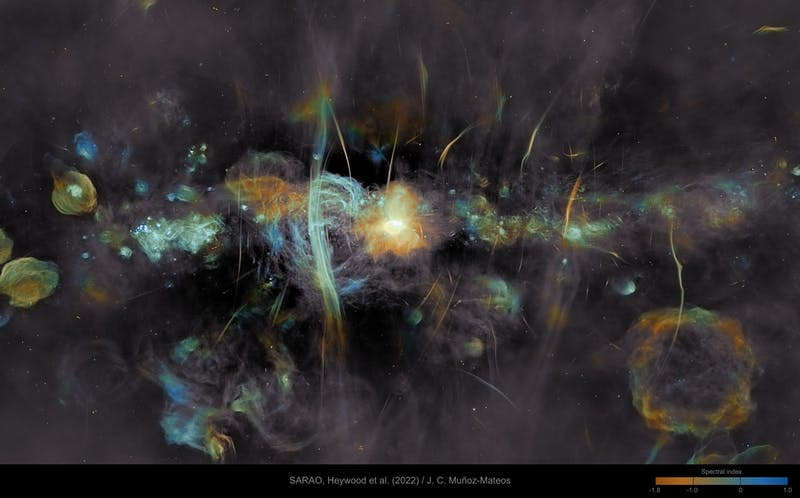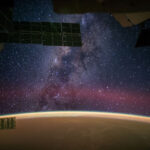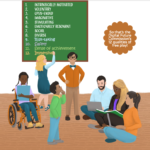
A few nights ago, I realized my retinas and amygdala were in serious need of a balm after 40 days on a steady stream of almost real time images from the war in Ukraine. I turned to NASA’s Astronomy Picture of the Day or APOD app for a different perspective. I immersed myself in the archive of images, looking at one after another until I came to the image for February 2, 2022—The Galactic Center in Radio from MeerKAT. The MeerKAT telescope—an array of 64 radio dishes—is located at the South African Radio Astronomy Observatory (SARAO) in Cape Town, South Africa. The APOD image description explains, “In our Galaxy’s Center lies Sgr A, found here in the image center, which houses the Milky Way’s central supermassive black hole.”
In this report on the Sci News website, Dr. Ian Heywood, gives these details: “The inner 652-light-year region of the Galaxy contains a supermassive black hole, significant quantities of molecular gas, and star formation and cosmic ray energy densities that are roughly two orders of magnitude higher than the corresponding levels in the Galactic disk. At a distance of only 26,745 light-years, the region presents astronomers with a unique opportunity to study a diverse range of energetic astrophysical phenomena, from stellar objects in extreme environments, to the supermassive black hole and star-formation driven feedback processes that are known to influence the evolution of galaxies as a whole.”
The “only” in “At a distance of only 26,745 light-years” triggered a much-needed perspective shift. Notice that the image shared on SciNews has a different coloration approach—same image, different style of color processing. Text below that image on SciNews explains that colors indicate bright radio emission, while fainter emission is shown in grayscale.
Pondering Galactic Center captured by Dr. Heywood and team via the MeerKAT reminded me of another perspective-shifting image, the first image of Earth from space, taken by the Apollo 8 astronaut Bill Anders in 1968. And thinking about that image reminded me of Amanda Gorman, 2017 National Youth Poet Laureate, and her poem Earthrise. I was a little younger than Amanda is today when Bill Anders captured that photo. Those first photos of Earth from space gave direction to my life. I have taken great hope and encouragement knowing that Amanda and I, generations apart, share and treasure the impact and challenge of this perspective-shifting Earthrise image. And we share an appreciation for the power of poetry and the role of poets to inspire our hearts and minds to action.
With National Poetry Month beginning a few days ago on April 1, I encourage you to listen to Amanda reciting her poem.
Earthrise Resources
Amanda Gorman reading her poem Earthrise
Earthrise Discussion Guide for exploring the 30-minute film Earthrise, created by the Global Oneness Project to tell the story of the first image of the Earth captured from space. Here is a description from the website:
“Students consider the story of the Earthrise photograph and the perspective it provided to the Apollo 8 astronauts and to the world. The photograph inspired the environmental movement and is one of the most iconic and widely reproduced images in history.
Could the Earthrise photograph, 50 years later, become a symbol of remembrance that unites us? Could the image act as a catalyst, enabling us to see our planet as one ecosystem? These questions are explored in this guide and students will be encouraged to think about their own place in the world and what it truly means to be a global citizen.”
Take care. Be well. Write a poem.


